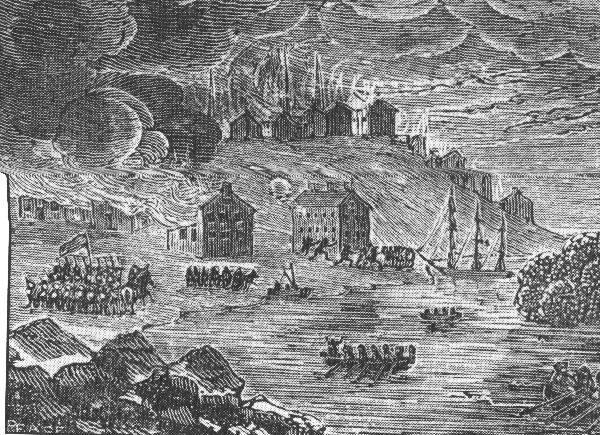During the last fading years of crown rule the 13 colonies were slipping into increasingly bitter turmoil. Much of this turmoil stemmed from the serious division amongst colonists regarding their relationship with England. Many historians estimate that loyalists represented over 20% of the general population (approx. 500,000) with citizens of neutral view comprising another 45% or more. In contrast, historical estimates place the number of citizens inclined toward revolution at just 30% with perhaps 20% willing to engage in armed struggle. Loyalists, by and large, were characterized as the better educated and merchant class within the colonies and of a more conservative nature.
During the years leading up to and following the revolution groups such as the “Sons of Liberty” began to take action against loyalist families, seizing or burning farms, homes, and businesses with the goal of driving loyalists from the community. These actions were particularly common in and around Philadelphia during the years following the revolution, due largely to the resentment of loyalist aid to British troops during the British occupation of Philadelphia in 1777-78. The result of these actions was the beginning of a migration of loyalists northward into western New York, Quebec, and Ontario numbering in a range between 60,000 and 100,000 people.

In order to accommodate this exodus the British Crown authority in Canada, under the leadership of Lt. Governor John Graves Simcoe, passed a resolution ordering that a certain tract of wilderness at Longs Point on Lake Erie be designated and surveyed, and that this land be granted exclusively for the resettlement of loyalists fleeing the 13 colonies. Following is an excerpt from the Simcoe letter ordering the establishment of the Long Point Settlement, “The settlers to be brought in should be brave and determined Loyalists, such as those from Pennsylvania and Maryland, who at the end of the war were associated to support the cause of the King, and who had sent an agent to ascertain what arrangements could be made for their removal to the province…”
Charles Knight was born in Philadelphia, Pennsylvania on January 12, 1796. His brother John, (father of Silas Knight Sr.) was born some years earlier in Massachusetts according to multiple references in family records. Charles, John, and their parents, became part of the Loyalist exodus.
Johns’ family and parents, arrived in Port Dover at Long Point in approximately 1811 or 1812. Both John and Charles arrived in Long Point some years later, having been taken prisoner by the Americans in the war of 1812. Charles was captured at Squaw Island on July 12, 1813 at the  battle of Black Rock, also known as the Battle of Buffalo. This was the battle in which Buffalo was burned to the ground. Prisoners taken during this battle were held by the Americans at Rensselaer, New York and were released at the end of the war. John was captured in a battle at Sugarloaf, at Port Colborne, Ontario, in 1813 and was returned to Canada in a prisoner exchange in 1814. During his captivity he was held at Pittsfield, Mass., approximately 90 miles from the original family location in the Rutland, Mass. area. He received aid during his internment indicating he had been wounded.
battle of Black Rock, also known as the Battle of Buffalo. This was the battle in which Buffalo was burned to the ground. Prisoners taken during this battle were held by the Americans at Rensselaer, New York and were released at the end of the war. John was captured in a battle at Sugarloaf, at Port Colborne, Ontario, in 1813 and was returned to Canada in a prisoner exchange in 1814. During his captivity he was held at Pittsfield, Mass., approximately 90 miles from the original family location in the Rutland, Mass. area. He received aid during his internment indicating he had been wounded.
The family is believed to have lived for some time in Port Dover upon arrival at the Long Point Settlement in 1811, but some question remains as to when the Woodhouse land grant took place. A birth of Louise Knight, daughter of John and Elizabeth Knight, is shown in the family history taking place at Woodhouse in the year 1812. Subsequent sibling births of Charles, Walter, and Benjamin are recorded as having occurred at Port Dover in the years 1814, 1816, and 1818 respectively.
The history of the Long Point Settlement is well documented, and this is understandable in that the majority of the loyalist settlers were from well-educated and merchant class families accustomed to the careful keeping of records. This background of the settlers also contributed to the fast, prosperous, and well organized growth of the settlement so the area quickly achieved economic success from the business and farming interests started there by the new residents.
Following are links to interesting sites and documents associated with the Long Point Settlement.